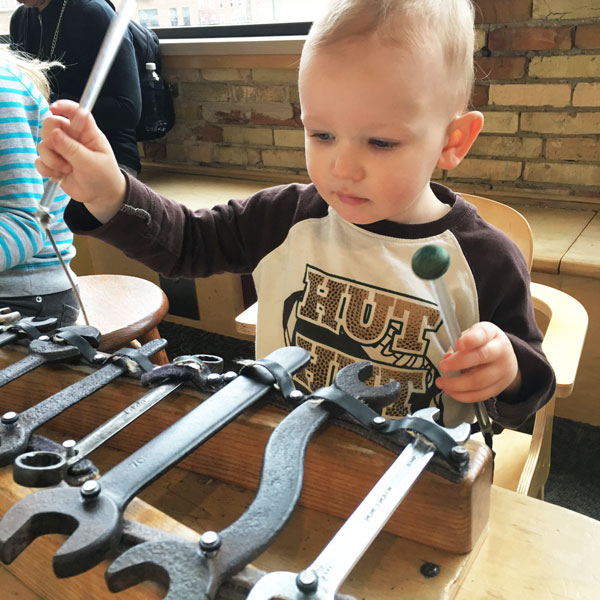How to Potty Train a 3 Year Old Girl
I Almost Stopped Having More Kids After I Tried to Potty Train my First
Potty training my first child brought me to my knees. I had survived breast feeding struggles, fevers and toddler tantrums. Potty training was just another step in bringing up my daughter, right?
I was so wrong. I think potty training was the most despairing, exhausting part of parenting my kids! Messes everywhere. Frustration (on both sides). Monotony. Feeling like you couldn't leave the house.
The good news? All three of my kids (yes, I was brave enough to have two more kids that would require potty training) were potty trained by age 4. They figured it out.

Potty Training Tips From a Doc With 3-Year-Old Twins
Unfortunately, there is no silver bullet solution to potty training. No magic spell or motivational speech will convince a child to immediately begin using the toilet.
You'd think the feel of a soiled, wet bottom would be reason enough to ditch the diaper, but the transition is more complicated than that.
Metro Health – University of Michigan Health pediatrician Dr. Kimberly Meles knows a thing or two about potty training toddlers.
"I have 3-year-old twins, a boy and a girl," she shares. "My husband and I decided to train them together between Christmas and the new year, just before they turned three. My daughter picked it up within a couple of days, but it took my son about two weeks."
Dr. Meles was experiencing exactly what she always tells parents: every child handles potty training differently.
"I tell parents there's no right or wrong way to potty train a child. As I learned with my twins, even siblings potty train differently. Sometimes it takes some good ol' fashioned trial and error."

1 – Determine if Your Kid is Ready to Learn Potty Training Yet
In general, most children are ready to train between ages two and three. This is when children develop an awareness of having to go to the bathroom and are able to stay dry for about two hours at a time.
"The child needs to be able to walk to the toilet, sit on the seat and pull their own pants down," Dr. Meles advises. "At this age, they are also typically starting to show an interest in the toilet and wearing underwear."
When parents ask Dr. Meles for potty training tips, she recommends everyone start by introducing their child to the potty.
"Read books about it. Show them how the toilet works and let them practice flushing," she suggests. "Let them watch their siblings or a parent use the toilet, so they become familiar with the process."
2 – Choose Your Strategy: Child Led or Bootcamp Style
From there, Dr. Meles says most potty training techniques fall within two core strategies: the slow child-led process and the bootcamp style .
Using the child-led strategy, parents gradually introduce the child to underwear and encourage them to use the potty as much they feel comfortable. The process may take longer, but it gives the child more control and allows them to take potty training at their own pace.
I wish I had heard of these two comparisons before training my first. She refused to potty train and I couldn't figure out why.
Then one day she said, "Mom, I do it myself!" and closed the door behind her in the bathroom. She was mad about potty training because I was hovering and she wanted me out of her hair. Bootcamp was cramping her style!
But bootcamp did work for Dr. Meles.
"We had our kids walk around the house with us to pick up all the diapers and 'throw them away,' which just meant I hid them," says Dr. Meles. "We picked out their new underwear and spent time as close to the bathroom as we could for a couple weeks."
Every time the kids looked like they needed to go or started to go, Dr. Meles rushed them to the potty and told them, "Pee goes in the potty."
Dr. Meles says that some parents who use this strategy take their child to the potty every 15-20 minutes to ensure there are as few accidents as possible. It all depends on the temperament of the child —and the parents—and what works best for them.
3 – Choose Your Prizes
Dr. Meles is also a big fan of small rewards during training. She says there's a sort of Goldilocks zone of prizes, where children are given something big enough to motivate them but not large enough to spoil their appetite or decide the reward is better than actually learning to use the potty.
"Things like small toys, stickers or snacks work well," she says. "My kids loved that when they peed they got one sticker and one M&M and when they pooped they got two stickers and two M&Ms. Keep using the rewards until they develop a habit, and then phase them out."
Dr. Meles says her twins have been using the potty since the beginning of 2020, and they haven't looked back. "The process we followed seemed to work. But it wasn't perfect. It's important for parents to know that accidents and setbacks will happen ."
For my kids, toys and treats meant nothing. If you have one of those kids on your hands, don't fret. You can still give "prizes" but they just may not be tangible ones. My kids blossomed from praises for a good job. So that was our currency.
4 – Gather Your Supplies, Including Lots of Extras: Underwear, Bedding and Cleaning Supplies
Prepare yourselves ahead of time with extra underwear, clean sheets and plenty of cleaning supplies. It's a lot less frustrating for us adults if we have all the tools we need to clean up an accident. And keep cleaning supplies on each floor of your house.
If your child isn't staying dry at night, don't be afraid to put them in a nighttime pullup and stick to daytime toilet training. It gives them a little break at night from the stress of learning this new skill. It also gives YOU and your washing machine a break.
Kiddie Toilet, Kiddie Toilet Seat, or Adult Seat? "Another other question I get asked a lot is whether parents should start with the adult toilet seat or use a child seat," says Dr. Meles.
Like with bootcamp vs. child-led style, it's just a matter of preference.
"If you start with a child's seat, it may be easy in the beginning," advises Dr. Meles, "but there's a second transition needed to get them to go on the adult toilet.
The child seat didn't work for my kids," she laughs. "My kids just wanted to play with the seats and wear them as a hat or carry toys in them. So, we skipped that!"
My kids used the potty seat, but I have other friends who went with the whole kiddie toilet. And then kept it in the back of their van so they could avoid accidents when running errands. Smart move!
5 – Expect Accidents and Extend Grace
Dr. Meles says there's a fine line between showing regret about an accident, cleaning it up and moving on, and showing frustration at the child.
"We told our twins, 'Remember, we want to get the pee in the potty because it doesn't feel good to be wet.' We didn't make them feel bad, but we didn't excuse the accident either. Express mild regret, correct, clean up and then move on."
It's sooo hard to not cry or get angry when your kid openly pees on the floor for the third time in 10 minutes. I was losing my cool with my oldest, so we paused potty training for a couple of months. When we returned to the task, both she and I were in better mental shape and she was completely trained in a couple of weeks.
Bedwetting is Common Until Age 6-7
Many children don't stay dry overnight for months or years after they're potty trained. It's normal.
Dr. Meles says bedwetting usually happens until about age 6 or 7.
"If your child is still wetting the bed after age 7, it's worth talking about it with your child's pediatrician," she says. "It could still be normal, but sometimes issues with constipation, urinary tract infections or other issues could be causing a problem."
When my kids got close to staying dry overnight, a couple of washable incontinence pads were my bffs. I'd tuck one in between the mattress pad and the fitted sheet and night time accidents were a breeze to clean up. (And if the kid was suddenly having a wet streak, I just put the pad on top of the fitted sheet to save myself from stripping the bed every night at 1 AM.)
Refusing to Poop on the Toilet is Also Normal. Sorry.
If there's one thing that Dr. Meles hears from parents, it's that their kid won't poop on the toilet. It is mystifying to an adult that pooping one's pants is preferred to the toilet, but it happens a lot.
"Many times, kids will wait until they have a Pull-Up or diaper on before they poop because they have anxiety about using the toilet," says Dr. Meles.
She reminds parents that encouragement and positive reinforcement is key. She also recommends that parents ask the child if it hurts to go poop. If that's the case, the child may be constipated, and your pediatrician can recommend solutions.
In the end, that kid will be potty trained! And it will be glorious.
Keep at it, give yourself and that cute kid of yours grace, and be ready to celebrate with a big treat once they get the hang of it.
University of Michigan Health – West
Multiple locations across West Michigan.
(800) 968-0051

How to Potty Train a 3 Year Old Girl
Source: https://grkids.com/potty-training-tips-from-a-doc-with-toddlers/

0 Response to "How to Potty Train a 3 Year Old Girl"
Post a Comment